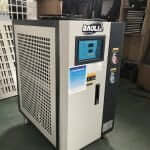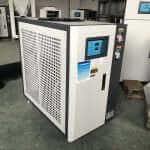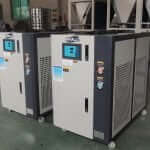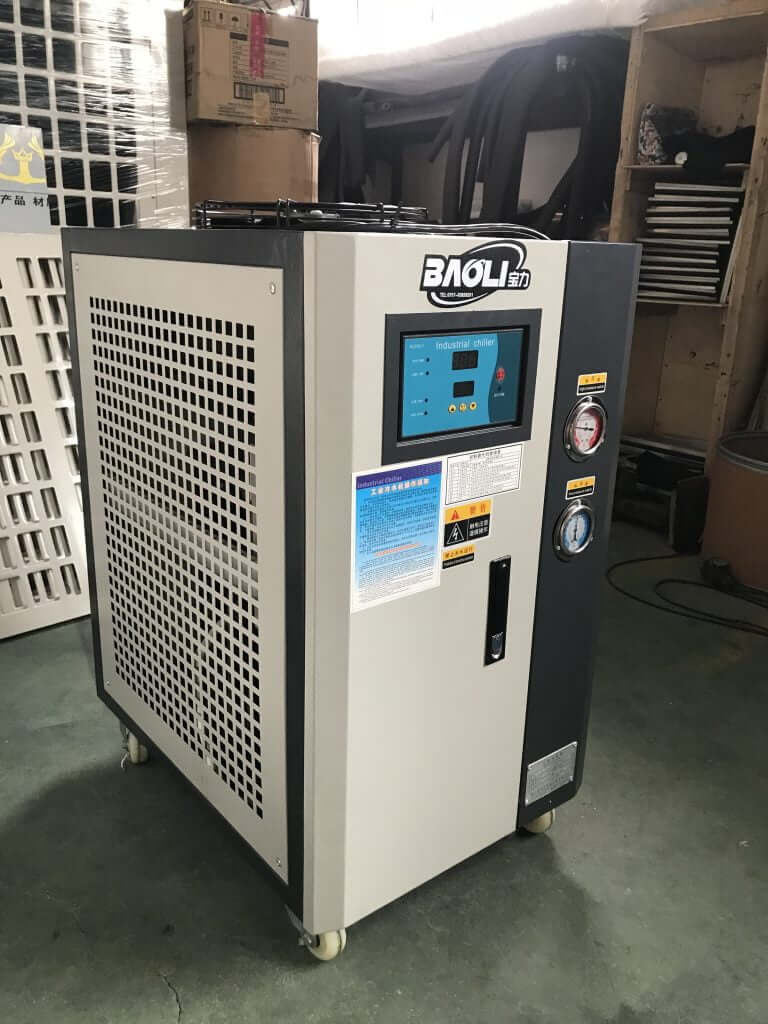简介:什么是水族箱冷水机?
水族馆不仅为我们的生活空间增添了美丽的色彩,而且还为我们的生活空间增添了美丽的色彩。它们是微型生态系统,需要精心维护,以确保内部水生生物的健康和福祉。维持稳定和适宜的水生环境的关键因素之一是适当的温度控制。这就是水族箱冷水机发挥作用的地方。水族箱冷水机是一种设计用于在水箱中的水温超过所需水平时降低水温的设备,模仿许多水生物种繁衍生息所需的自然条件。无论您的咸水珊瑚礁水族箱里有精致的珊瑚和鱼类,还是淡水水族箱里有对温度敏感的物种,选择合适的冷水机对于防止水生居民的压力、疾病甚至死亡至关重要。
选择时要考虑的因素
水族箱的大小是确定合适的冷水机容量的主要因素。更大的水箱将需要更强大的冷却器来有效冷却更大体积的水。一般来说,您应该以加仑或升为单位计算水箱的容量。例如,小20 – 与 100 加仑的水箱相比,其冷却要求不同 – 加仑水箱。对于水箱来说太小的冷水机将难以维持所需的温度,从而导致对鱼类和植物有害的波动。另一方面,太大的冷水机不仅浪费金钱,还可能导致过度制冷,从而产生负面影响。找到适合合适水箱尺寸的冷水机非常重要,以确保高效、准确的温度控制。
不同的水生物种有特定的温度偏好。有些鱼类和珊瑚在较冷的水域中繁衍生息,而另一些则喜欢稍微温暖的环境。例如,热带鱼通常在 75°F 至 82°F 的温度范围内表现良好,而某些海洋无脊椎动物(如某些珊瑚物种)可能需要更精确的温度范围(78°F 左右)。研究水族箱中特定生物的温度需求至关重要。如果您有多样化的水生生物群落,您可能需要找到适合大多数水生生物的折衷温度。您选择的冷水机应该能够准确地维持所需的温度范围。一些先进的冷水机甚至具有可编程的温度设置,使您可以根据水族箱居民的需求定制温度。
选择水族箱冷水机时,能源效率是一个重要的考虑因素。从长远来看,更节能的冷水机不仅可以节省您的电费,而且也更环保。寻找具有高能效等级的冷水机。它们通常使用先进的技术和组件来最大限度地减少功耗,同时仍然提供有效的冷却。需要寻找的一些功能包括高效的压缩机、良好的隔热性以及可根据实际温度需求调整冷却输出的智能温度控制系统。投资节能冷水机最初可能会花费更多一些,但随着时间的推移,节省的费用可能会很大,特别是对于需要持续冷却的大型水族箱。
冷水机的噪音水平会对水生生物和周围环境产生重大影响。嘈杂的冷水机会给鱼带来压力,这可能会影响它们的行为和健康。在家庭环境中,大声的冷水机也会给居住者带来麻烦。选择冷水机时,请寻找设计为安静运行的型号。一些制造商使用隔音材料和先进的电机技术来降低噪音。阅读评论并向其他水族馆业主询问有关不同冷水机噪音水平的建议是个好主意。安静的冷水机将为您的水族馆和您的家提供更加宁静和轻松的环境。
选择水族箱冷水机时,选择信誉良好、产品可靠的品牌至关重要。知名品牌更有可能拥有生产高质量、耐用且可靠的设备的记录。寻找已经进入市场一段时间并获得积极客户评价的品牌。可靠的冷水机不太可能发生故障或故障,这对您的水族箱来说可能是灾难性的。它们通常还提供更好的保修和客户支持。投资研发的品牌更有可能提供先进的功能和更好的性能。做好功课并研究不同的品牌,以确保您投资的冷水机能够为您的水族箱提供长期可靠的服务。
选择水族箱冷水机的指南
在购买之前,进行彻底的研究至关重要。在线查找产品评论、比较和专家意见。专门从事水生爱好的水族馆论坛和网站是很好的信息来源。了解其他使用不同冷水机的水族馆业主的经验。这可以让您深入了解各种模型的性能、可靠性和任何潜在问题。注意细节,例如冷水机组的温度保持情况、能耗、噪音水平以及安装和维护的难易程度。通过收集尽可能多的信息,您可以做出更明智的决定,并增加选择满足您特定需求的冷水机的机会。
如果您不熟悉水族箱饲养或不确定哪种冷水机适合您的设置,咨询水族箱专家或经验丰富的爱好者可能会有所帮助。他们可以根据自己的知识和经验提供宝贵的建议。了解所销售产品的水族馆商店员工也可以提供指导。他们可能会根据您的水族箱尺寸、水族箱中的物种以及您的预算推荐特定型号。此外,加入当地的水族馆俱乐部或在线社区可以让您接触到经验丰富的个人网络,他们可以分享他们的见解和经验。不要害怕提出问题,并向那些在维护健康水生环境方面拥有更多经验的人寻求建议。
虽然选择高质量的冷水机很重要,但您还需要考虑您的预算。水族箱冷水机的价格多种多样,具体取决于其功能、容量和品牌。设置一个您满意的预算,但也要注意,更便宜的型号可能并不总是提供最佳的性能和可靠性。平衡成本与质量是个好主意。在您的预算范围内寻找一款物有所值的冷水机。还要考虑长期成本,包括能源消耗和潜在的维护费用。有时,从长远来看,多投资购买质量更好的冷水机可以提供更高效的冷却和更少的故障,从而为您节省资金。
考虑安装和维护冷水机的难易程度。有些冷水机的设计易于安装,并配有清晰的说明和所有必要的配件。其他人可能需要更多的技术知识和安装技能。考虑您自己的能力以及是否需要聘请专业人员进行安装。在维护方面,寻找易于清洁且具有易于维修的组件的冷水机组。定期维护对于保持冷水机组高效运行并延长其使用寿命至关重要。检查制造商是否提供维护指南以及是否可以随时获得更换零件。从长远来看,易于安装和维护的冷水机将为您节省时间和精力,并确保其持续良好运行。
选择合适的水族箱冷水机的具体步骤
-
确定您的水族馆的要求
– 测量水族箱尺寸:准确测量水族箱的长度、宽度和高度,以计算其体积(以加仑或升为单位)。这将是寻找具有适当容量的冷水机组的起点。
– 研究物种’ 温度需求:确定水族箱中鱼类、植物和其他生物的类型,并研究它们的理想温度范围。如果您有一个多元化的社区,请找到一个可以容纳大多数居民的共同温度范围。
-
设定预算
– Decide how much you are willing to spend on the chiller. Consider not only the initial purchase price but also the long-term costs such as energy consumption and potential maintenance. Remember that a higher-quality chiller may cost more upfront but could save you money in the long run.
-
Research and Shortlist
– Online research: Look for aquarium chiller reviews on reliable websites, forums, and social media groups dedicated to aquariums. Read about the performance, reliability, and user experiences with different models.
– Ask for recommendations: Talk to aquarium store employees, experts, and other hobbyists. They can provide insights based on their own experiences and knowledge.
– Create a shortlist: Based on your research and recommendations, shortlist a few chiller models that seem to meet your requirements in terms of capacity, temperature control, energy efficiency, and noise level.
-
Check Energy Efficiency Ratings
– Look for energy star ratings or other indicators of energy efficiency. Compare the power consumption of the shortlisted chillers to find the most energy-efficient option that fits your budget.
-
Evaluate Noise Levels
– Read reviews and ask about the noise levels of the shortlisted chillers. If possible, try to find videos or demonstrations that show how quiet or noisy a particular model is. Opt for a chiller that operates quietly to avoid stressing your aquatic life and disturbing your living environment.
-
Consider Brand and Reliability
– Research the brands of the shortlisted chillers. Look for brands with a good reputation for producing reliable and durable aquarium equipment. Check customer reviews for feedback on the brand’s after-sales service and warranty policies.
-
Examine Installation and Maintenance Requirements
– Read the product manuals or online descriptions to understand the installation process. Consider whether you have the necessary skills and tools for installation or if you may need to hire a professional.
– Look for chillers that are easy to maintain, with accessible filters, coils, and other components that may need cleaning or servicing. Check if the manufacturer provides clear maintenance guidelines and if replacement parts are readily available.
-
Make the Final Decision
– 比较每个入围冷水机的所有因素。考虑哪一款能够在您的预算范围内提供性能、可靠性、能源效率、噪音水平以及易于安装和维护的最佳平衡。根据您的综合评估做出最终决定并购买所选的水族箱冷水机。
水族箱冷水机的安装注意事项
- 空间要求:确保水族箱周围有足够的空间来安装冷水机。应放置在通风良好且不拥挤的位置。冷水机需要散热,因此不宜放置在气流受限的封闭区域。
- 靠近水箱:冷水机应尽可能靠近水族箱,以尽量减少水循环所需的管道长度。较长的管道会导致压降增加,并可能影响冷水机组的效率。但是,请确保冷水机组周围有足够的间隙,以便进行维护和检修。
- 避免阳光直射和热源:请勿将冷水机安装在阳光直射的地方或靠近热源(例如散热器、加热器或产生大量热量的电器)的地方。这可能会导致冷水机比冷却水所需的工作更加困难,甚至可能导致冷水机本身过热。
- Correct Tubing Size: Use the tubing size recommended by the chiller manufacturer. Incorrect tubing diameter can affect the water flow rate and pressure, which in turn can impact the chiller’s performance. Make sure the tubing is of good quality and free from any defects or kinks.
- Secure Connections: All tubing connections should be made securely to prevent leaks. Use appropriate fittings and clamps to ensure a tight seal. Leaks can not only cause water wastage but also create a mess and potentially damage your flooring or surrounding furniture. Check for leaks after installation by running the chiller for a short while and observing the connections.
- Water Flow Direction: Follow the correct water flow direction as indicated in the chiller’s installation manual. Incorrect flow direction can lead to inefficient cooling or even damage the chiller’s internal components. Some chillers may have specific requirements for the inlet and outlet of water, so make sure to connect them correctly.
- Voltage and Amperage Requirements: Check the electrical requirements of the chiller and make sure that the power supply in your area can meet those requirements. Using the wrong voltage or insufficient amperage can cause the chiller to malfunction or not operate properly. It may also damage the electrical components of the chiller and pose a safety hazard.
- Grounding: Ensure that the chiller is properly grounded to prevent electrical shocks. Most electrical appliances come with a grounding wire or a grounding plug. Make sure to connect it to a properly grounded electrical outlet. If in doubt, consult an electrician to check the grounding of your electrical system.
- Power Cord Length and Placement: The power cord should be long enough to reach the electrical outlet without being stretched or strained. Avoid running the power cord across high-traffic areas or in a way that it can be easily damaged. If possible, use a cord cover or conduit to protect the power cord and make it look more organized.
-
Initial Startup and Testing
- Read the Manual: Before starting the chiller for the first time, carefully read the manufacturer’s instructions regarding the initial startup procedure. This may include steps such as filling the chiller with water (if required), priming the pump, and setting the initial temperature settings.
- Monitor Temperature: After starting the chiller, closely monitor the water temperature in the aquarium. Check if the chiller is able to reach and maintain the desired temperature within a reasonable time. If the temperature does not seem to be changing as expected or if there are any unusual fluctuations, turn off the chiller and check for any installation errors or problems.
- Check for Noise and Vibrations: Listen for any abnormal noise or vibrations coming from the chiller during operation. Excessive noise or vibrations may indicate a problem with the installation, such as improper leveling or a loose component. If you notice any issues, turn off the chiller and investigate further to ensure proper operation and longevity of the device.
结论
Choosing the right aquarium chiller is a crucial decision that can have a significant impact on the health and well-being of your aquatic pets. By considering factors such as tank size and capacity, water temperature requirements, energy efficiency, noise level, brand and reliability, and following the specific steps for selection and installation, you can make an informed choice. A well-chosen and properly installed chiller will help maintain a stable and suitable aquatic environment, allowing your fish, plants, and other organisms to thrive. Remember that investing time and effort in choosing and installing the right chiller is an investment in the long-term success of your aquarium and the enjoyment you get from observing and caring for your aquatic friends. So, take your time, do your homework, and make the best choices for your unique aquarium setup.
To learn more about how chillers work and If you’re interested in our chiller, request a quote,
pls sent your E-mail to info@topwaterchiller.com, or call +(86) 139 2883 9015 .



















